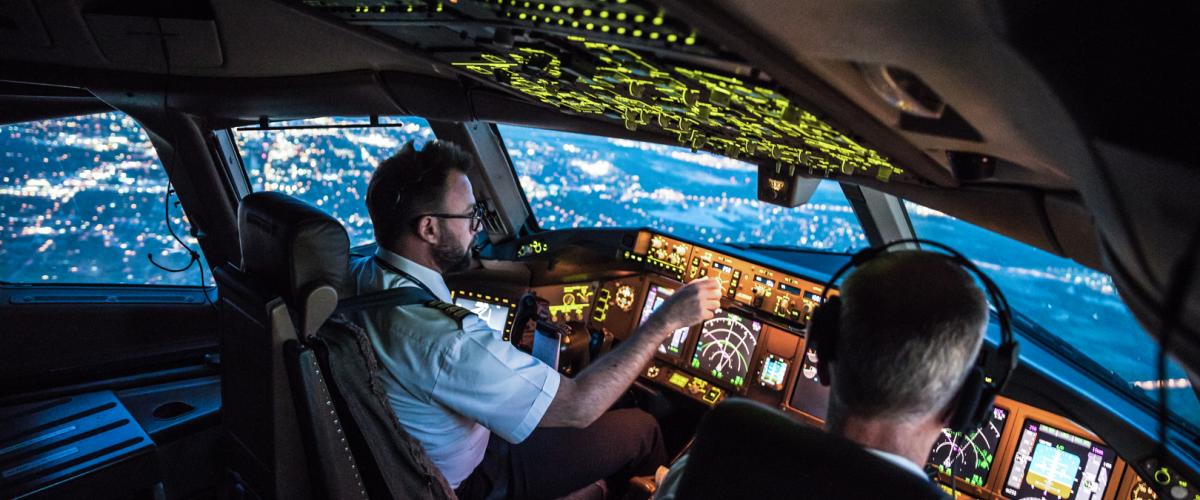b<>com and Human Design Group presented a virtual reality simulator at the International Paris Air Show. Focused on user experience, it employs cognitive technologies to analyze and accurately anticipate human behaviors. The goal is to design the interfaces of the future.
After a real-time creation phase (adjustable scenario, moving items on a dashboard, etc.), the experience immerses the user into an aircraft cockpit and challenges him to perform tasks of varying complexity (flight pattern, radio channel selection, resource management, etc.) to test how these factors influence his state of mind and operational capacity. Biometric sensors (eye tracking, heart rate, perspiration, etc.) and behavioral data are used to measure stress, mental load, and other aspects like fatigue, watchfulness, and learning.
Once this data is analyzed with the help of artificial intelligence, it can predict the user’s cognitive state in real time. The goal is to design the interfaces of the future and test customized collaborative scenarios between people and machines.
Today, manufacturers are striving to optimize their innovation processes and make the most of scientific advances in the field of behavioral analysis. Expertise that combines human factors and cognitive sciences addresses this need. By making human beings the focus of their R&D approach, they maximize the success of their technology. Offering these user-centered innovations to global manufacturers is why b<>com and HDG have chosen to collaborate.
More info about Paris Air Show



